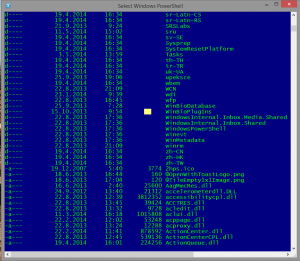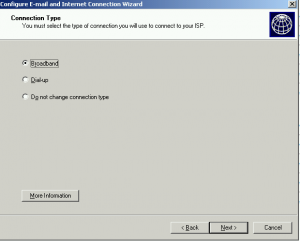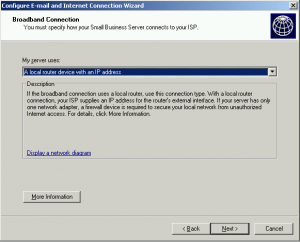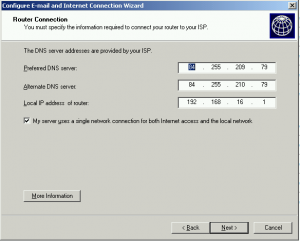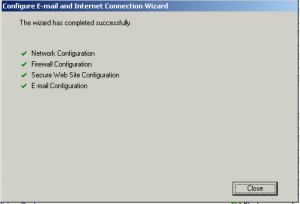Not long ago and just because of a coincidence, I found something strange in PowerShell.
I was executing a script, but this execution took a long, long time and nothing succeeded. I was just waiting, but there wasn’t any error report and the script didn’t finish. The only thing I saw it was a selected point on the PowerShell screen.
So, what has happened? The answer is simple: when you have a selected area on the PowerShell screen, the execution of any command is paused. If you want to resume a command, just right click anywhere in PowerShell window (removing the selection). That’s all, the work will resume.
A simple trick, a simple thing that could be useful just for reading some output informations or for avoiding problems like “Why is it taking so much time to do this?”
Category: Windows Server
Remotly manage Local Admins
Many times I come in environments, where it is normal that any user has a local administrator right on his computer. As you probably know (I hope), this is not the best practice and it is very dangerous from the point of security.
Anyway, removing all this users from all computers is an annoying job. Of course, you can do it via Group policy, but you can’t use a filter in case someone has to remain. For those cases, I wrote a small vbs script that you can use.
The usage is simple. Form the administrative command prompt change the directory to the place, where the script is located and run it: RemoveAdmin.vbs ComputerName. ComputerName is the name of the computer you want to check.
The script will have a look into local admin group and you will be asked for every member if you want to remove it or not. Simply, you can filter who will remain local admin and who will lost this privilege. Think twice before you leave this privilege to a user member of local admin group – remove it, if you don’t have a really good reason to keep it.
Download: RemoveAdmin
.
Step-by-step DC migration from SBS 2003 to Essentials 2012R2
Almost all of us, administrators of SBS servers, did a migration from one version to another several times. But in this moment we have at least two problems: SBS doesn’t exist anymore (and we have to do a hybrid deployment) and the new situation – the Essentials server 2012R2 doesn’t have a migration mode. So, I decided to write a blog how to migrate the SBS 2003 AD to the Essentials Server 2012R2 step by step.
Maybe in this steps there is a restart that is not really necessary, but please, do it. This is the only way that grants you success to migrate the AD and finally install the Essentials role successfully. Take your time and go through this steps:
- Start with uninstalling or disabling features of the SBS 2003. The first thing to do is to uninstall the ISA server (if it is installed – not covered in this article) and run the Connect to internet wizard again.
- Restart the SBS Server. If you have enabled the VPN, run the Configure Remote Access Wizard and disable the VPN access. Don’t forget it! You will not be able to disable it later!
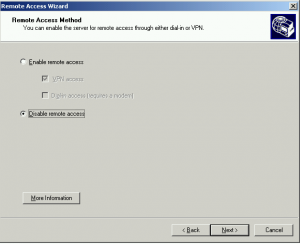
- Shutdown the SBS Server and remove the second NIC (the NIC that is connected to Internet).
- Add the router to the network and configure the port redirection (for now to the SBS server – you need this step because you must receive E-Mails, grant remote access,…Do not forget to forward ports 80, 443, 25 and 987 – not covered in this article).
- Start the SBS Server and run the Connect to Internet Wizard again:
- From C:\Windows\Sysvol\Sysvol\DomainName\scripts delete the SBS_LOGIN_SCRIPT.bat file. This file is present in any SBS user as logon script and you have to delete it from all of the users as well.
- Form the Start Menu > Administrative tools, start the Active Directory Domains and Trusts. In the left panel, right click on Active Directory Domains and Trusts and select Raise Forest Functional Level. Raise the forest level to the Windows Server 2003 version.
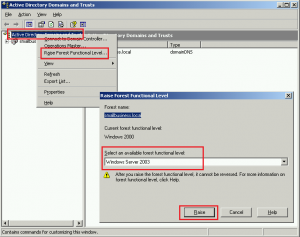
- Restart the SBS Server.
- On the Essentials server, on the Configure Windows Server Essentials wizard, press Cancel.
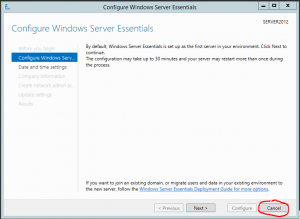
- Open the Control Panel > System and Security > System and change Computer name. Leave the compute member of workgroup. Be careful: you have to rename the computer in this step, you cannot rename it after the Configure Windows Server Essentials wizard is finished.
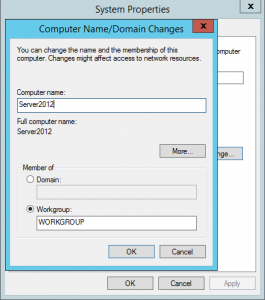
- My suggestion: From Start > Run type ncpa.cpl, right click on the network connection. Select properties and configure the static IPv4 address. As a DNS server, add a SBS Server IP address.
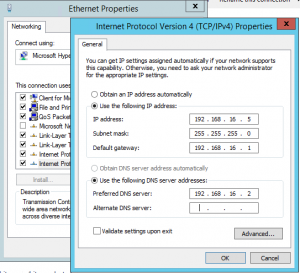
- Restart the Essentials Server.
- Open the Server Manager (not Dashboard!) and select Add roles and features. In the Add Roles and Features Wizard, install the Active Directory Domain Services role.
- Restart the Essentials server.
- On the Configure Windows Server Essentials wizard, press Cancel again and start the Server Manager again.
- From Server Manager > Notifications (up right corner) run Promote this server to a domain controller task.
- When the wizard is open, on the first page select Add a domain controller to an existing domain and enter the SBS admin credentials. When you will confirm this credentials, the Domain field will fill automatically. Click Next.
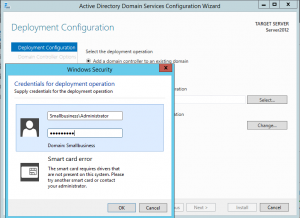
- The next step is to enter the DSRM password (complex, 8 or more characters) and be careful to check the checkbox of the DNS server! Click Next.
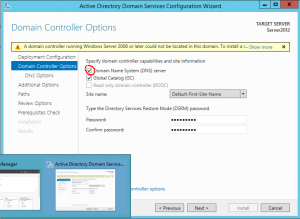
- Clear the checkbox on Update DNS delegation and click Next.
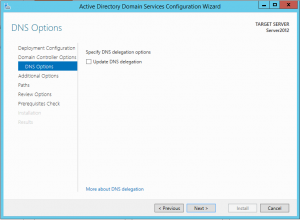
- In the next few steps click Next. In the Review Options check that all options are OK and click Next once again.
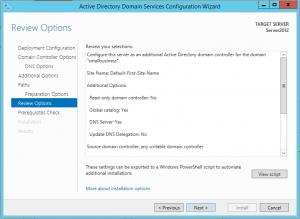
- In the Prerequisites Check step, you will receive some warnings. This is nothing serious and you are ready to promote this server as an additional DC in the SBS domain. Click Install.
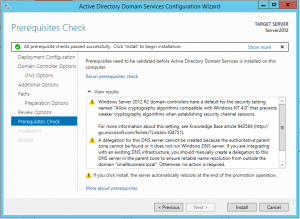
- During the installation, the domain schema and the forest schema will be automatically upgraded. The process could take a while. After the installation is finished, the server will restart.
- Logon to the server with the SBS administrator domain credentials.
- Complete the Configure Windows Server Essentials wizard.
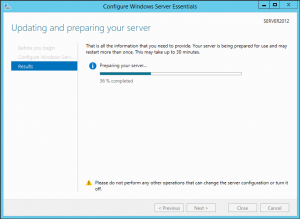
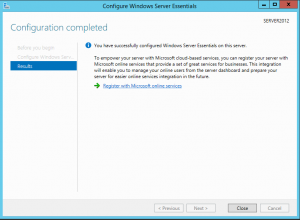
- My suggestion: Install the DHCP server on the Essentials Server. Do not use the router as DHCP server. Check forwarders in the DNS server. You have to use only the ISP DNS servers as forwarders or, if you prefer, you could not use any forwarder.
At this point, the Essentials Server 2012R2 is added as an additional DC in the SBS domain. Be careful, because you have only 21 days to complete the migration and you still have a lot of work. You have to transfer all the shared folders data, the Exchange mailboxes, the SharePoint data,… Please do not forget to control and change some settings on the GPO. Remove some GPO (some are set strictly for the SBS).
Be aware, that all workstations have to be added to the “new” domain once again true the connect site.
Be careful also when you will turn off your old server. You cannot just turn it off. You have to uninstall at least the Exchange and the DC role, but I prefer to uninstall all the installed roles, remove the server from the domain (make it part of a workgroup) and after this I turn it off.
Please let me know if you want me to write additional blog posts on migrating other functionalities of SBS..
Remotly enable remote registry
Sometimes, when we need to connect to the registry of another computer to view or change some registry key, we are very disappointed, because this functionality is not working.
In most cases, it is our responsibility (we should think of this in advance), but we need to correct it immediately.
As we want to be able to connect on our network registry, we have to start the Remote Registry service on the remote computer. We can start it from the command prompt with sc \\computer start remoteregistry.
This will start the service and it will run it until the restart or shutdown of the computer. If you want to set a service to start automatically, you have to write another command: sc \\computer config remoteregistry start= auto. This command will configure the service to start automatically – it will not start the service itself.
And just an advice: use a group policy to deploy settings like this. It is more transparent and you will have better results with less work.
Hope the post was helpful..
How to transfer all FSMO roles to a different server
In any AD there are five FSMO roles. Two are unique for the entire forest and three are for any domain. If you have a smaller environment, with only one domain in the forest, this domain hosts all five roles. If you have to change DCs, then you have to transfer all five FSMO roles to new servers. Here are all the steps how to transfer all roles, one by one.
At the beginning, you have to be sure, that the replication between all DCs is working well. You can check this with Active Directory Replication Status Tool .
Now, if it is working well, you can begin with the process to transfer all AD roles to servers that you want:
- Open Command prompt as Administrator.
- To find where roles are currently hosted, type NETDOM QUERY FSMO.
- Now you know where the roles are situated and you are ready to begin transferring the roles. At the command prompt, type NTDSUTIL.
- Type ROLES.
- Type CONNECTIONS to enter in the connection mode.
- Type CONNECT TO SERVER <ServerName> (where <ServerName> is the name of the Destination Server).
- Type Q for leaving the server connections mode.
- Type TRANSFER PDC for transferring the PDC role to the connected server and then click Yes in the Role Transfer Confirmation dialog box.
- The same step can be done for transferring other rules.
- Use TRANSFER INFRASTRUCTURE MASTER for transferring the Role Infrastructure Master Role, TRANSFER NAMING MASTER for the Naming Master role, TRANSFER RID MASTER, for the RID Master and TRANSFER SCHEMA MASTER, for Schema master role.
- When you have done, just type Q and press ENTER until you return to the command prompt.
